
Date :2019-05-07
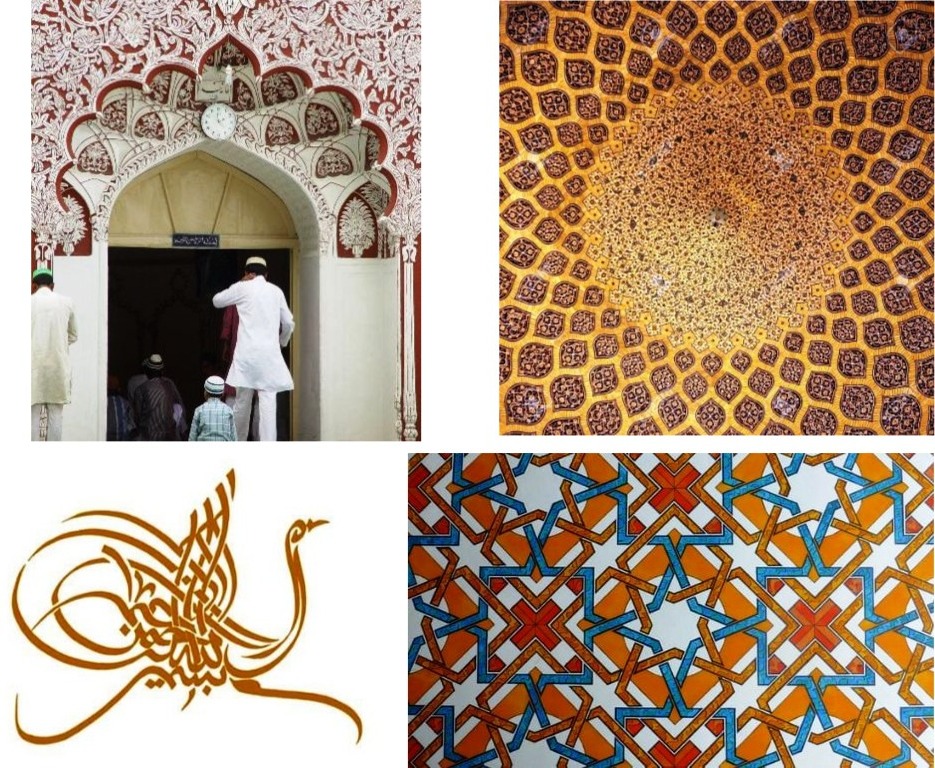
Across the world, human creativity finds inspiration in religion, expressing itself through various art forms. In Islam, craftsmen and artists were prohibited from making direct representations of living beings. Instead they displayed their imagination by converting principles of geometry into an art form to decorate their mosques, madrasas and palaces. Across the world, the walls and ceilings of these buildings were covered with stunning patterns based on repetitive geometrical shapes that often appeared to extend to infinity. Floral patterns were also used extensively to adorn the Islamic structures along with the honeycomb and geometric patterns, as can be seen in the picture above (top left) of the Moti Masjid in Rampur.
Over time, the taboos outlawing religious iconography were toned down. The spiritual beliefs, rituals and practices of Sufis (mystical adherents of Islam) further inspired artists and poets to create art works and write verses and poetry in admiration of the Almighty. Further, by the mid 15th century, Zoomorphic Calligraphy (zoo: animal + morph: shape) developed in Ottoman Turkey, Qajar Iran and India, wherein words of Persian and Arabic script were shaped in the form of a living object which they represented i.e drawings of birds, animals or people were created with calligraphy.
Calligraphy has been an important tradition in Rampur, initiated and patronized like the other crafts by the Nawab rulers of Rohilkhand. The Rampur Raza Library, houses over 3000 calligraphy objects comprising of verses from the Holy Quran and prose and poetry in Persian and Arabic. Prominent amongst these are the 7th century Holy Quran which was hand written by Hazrat Ali, the 9th century Quran in Kufic script and the 16th century page of the Quran decorated in gold which had been commissioned by Emperor Akbar. Every year during the holy month of Ramadan, these treasures from the calligraphy selection are displayed at the exhibition hall of the library. Most of the citizens of Rampur, irrespective of their religious inclination feel a sense of pride in visiting this exhibition year after year.
Under the Rohilla Mohalla Project, the Islamic Arts theme is a celebration of the rich cultural and palaeographical heritage of Rampur, centred largely around the Rampur Raza Library. Traditional Zari-Zardozi embroidery master craftsmen of Rampur were inspired to create masterpieces depicting religious iconography and calligraphy on textiles, to create meaningful products which could be used to decorate urban homes.
Zardozi (Zar: gold + Dozi: embroidery), is believed to have come to India from Persia, reaching its peak in popularity under the patronage that it received during the reign of Emperor Akbar. An elaborate and intricate embroidery technique, Zardozi was initially carried out by embroidering only with real gold or silver and / or silk threads and further embellishing the embroidered fabric with pearls and precious stones. With the raw material required being relatively rare and expensive, the zardozi artisans required patronage to flourish, which they received in abundance from the royal courts of Rampur. Traditionally zardozi embroidery was done only on silk, satin or velvet fabric and was used to create regal robes for royalty, or for decorating their tents or their elephants and horses. Today copper wires with a gold or silver polish are used for the embroidery and miscellaneous metallic star shapes (sitaras), gold wire pieces (salmas), round sequins, glass / plastic beads and threads (dabkaa / kasab) are used for the embroidery and pasting the embellishments. Largely the zardozi skill is being used to manufacture by hand wedding sarees and lehengas. The unstiched fabric is stretched onto a wooden frame or adda and the required design is traced onto the fabric and embroidery is carried out using special needles and curved hooks.
The following products were designed and manufactured entirely by hand at the Rohilla Mohalla Training Centre under this theme:
Training focus:
Date :2019-05-07
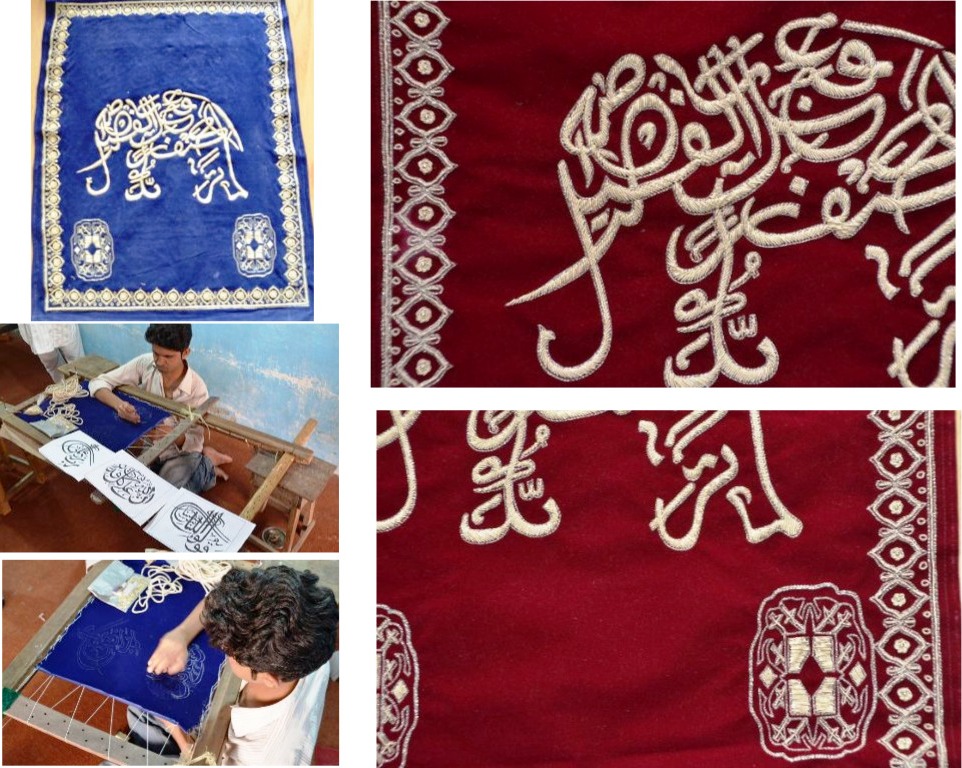
This wall hanging is hand made by using the zardozi (karchob) embroidery technique on velvet, as was the convention. Under the Rohilla Mohalla Project, this traditional technique was utilised to represent new trends in calligraphy such as Zoomorphy.
Fil (Elephant in Persian) was always part of the royal entourage across Asia and is considered as an auspicious symbol. The manuscript Fil-Nama describes at length how to look after elephants. In this wall hanging, Zardozi Master Craftsman Iqbal Kamalzai, embroidered an elephant shaped calligraphy pattern with text from the Fil-Nama and finished off by embroidering the octagonal gul (flower in Persian) pattern known as the Fil-Pai or elephant foot – a popular motif represented in Persian and Afghan carpets.
Date :2019-05-07
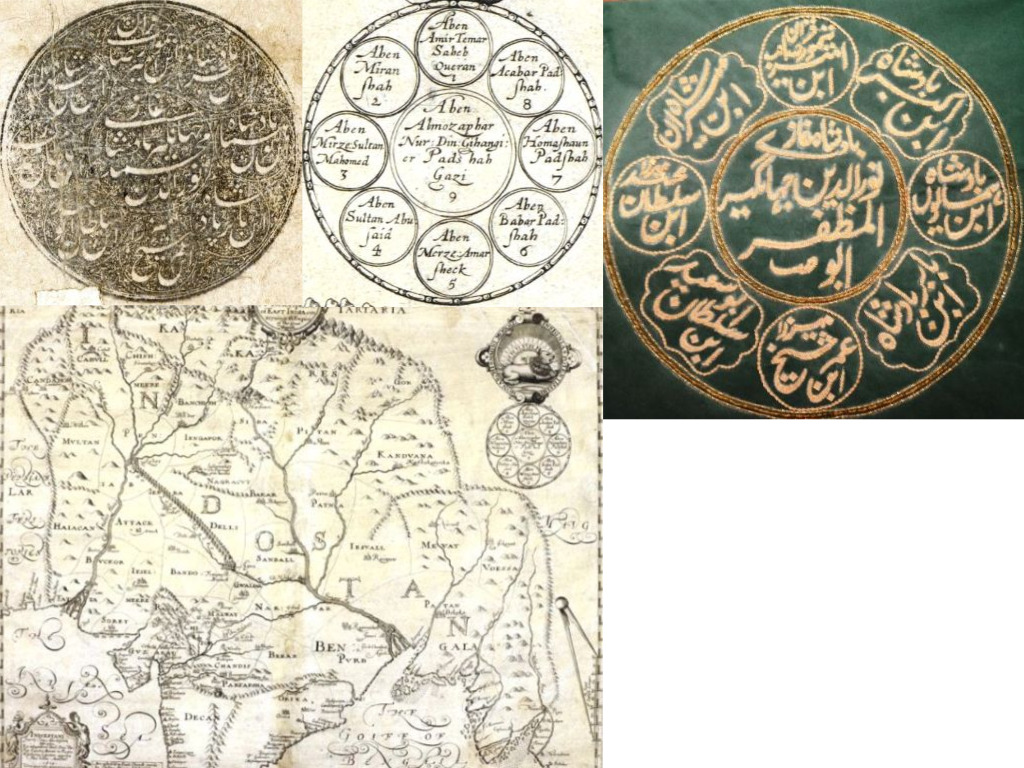
The language of the scriptures plays a key role. The shift over time from Urdu to Hindi and from Persian to Arabic is visible even in Rampur. The old Rohilkhand Seal and the Mughal Seal favored by Jehangir used Persian language, not Hindi (Devnagari) or Urdu or English (Roman) scripts.
On the top left most corner in the picture above is an image of a seal in old Persian language, which was used on a land grant issued by Jehangir in the year 1609. The seal contained the ruling emperor’s name in the centre surrounded by his Timurid ancestors. It became an important symbol of Mughal imperial authority and was noted by several contemporary European travellers. Below this seal is an image of a British map published in 1619 for the East India Company, which is the first to chart the Mughal empire, specifically locating its cities and rivers in detail. The map was made by the surveyor William Baffin in association with Sir Thomas Roe, England's first ambassador to Mughal India for 3 years during the reign of Jehangir. Thomas Roe had collected the geographical data on 37 cities for this map. This important map paved the way for the entry of the EIC into Surat and as the first detailed map of Northern India, it provided the basis for all future maps of India for the next hundred years.
On the top right hand side, the map depicts Jehangir’s dynastic / genealogical seal as an almost exact replica translated in English. Under the Rohilla Mohalla Project, we gave both the Persian and English version of Jehangir’s Seal to experts in old Persian language to translate the contents in Urdu as well. Once the slightly simplified design of this seal with its contents was traced onto a velvet cloth, master craftsman Iqbal Kamalzai embroidered the pattern and its contents with gold coloured wire pieces using the Zardozi technique (top extreme right in the picture above). This piece was recreated by hand embroidery as an important reminder of India’s past and its linguistic heritage.
Date :2019-05-07

Sufism, the esoteric path within Islam, prescribes the purification of oneself to achieve mystical union with God. It’s the way of the heart, with all of the sufi practices aimed at letting go of one’s ego, which is considered the biggest obstacle to realization.
Zikr (Jikr or Dhikr) and Fikr (embroidered on the bottom right cushion cover in the picture above) are the important first steps towards this realization in path of Sufism. Zikr, literally means remembrance of God and the continual remembrance enables the seeker to inscribe His name in one’s heart. The next stage of Fikr refers to deeper contemplation and introspection .
Mannat, one of the popular practices in Sufism, refers to a wish or a vow. which when fulfilled is reciprocated by giving away alms to the needy or by visiting a shrine to offer gratitude. Dua denotesthe daily prayer and blessings received.
The Dervish is one of the most familiar symbols of the Sufi Practice, as being engaged in Zikr while participating in a dance like ceremony accompanied with music.
Master craftsman Mubashir Shaikh, recreated these gentle concepts of Sufism using the zardozi technique of Ari embroidery which is done using coloured silk threads. A set of silk cushion covers in this theme made for an exclusive and meaningful urban home décor product while also reminding the embroidery artisans of this important branch of the Islam.
Date :2019-05-07
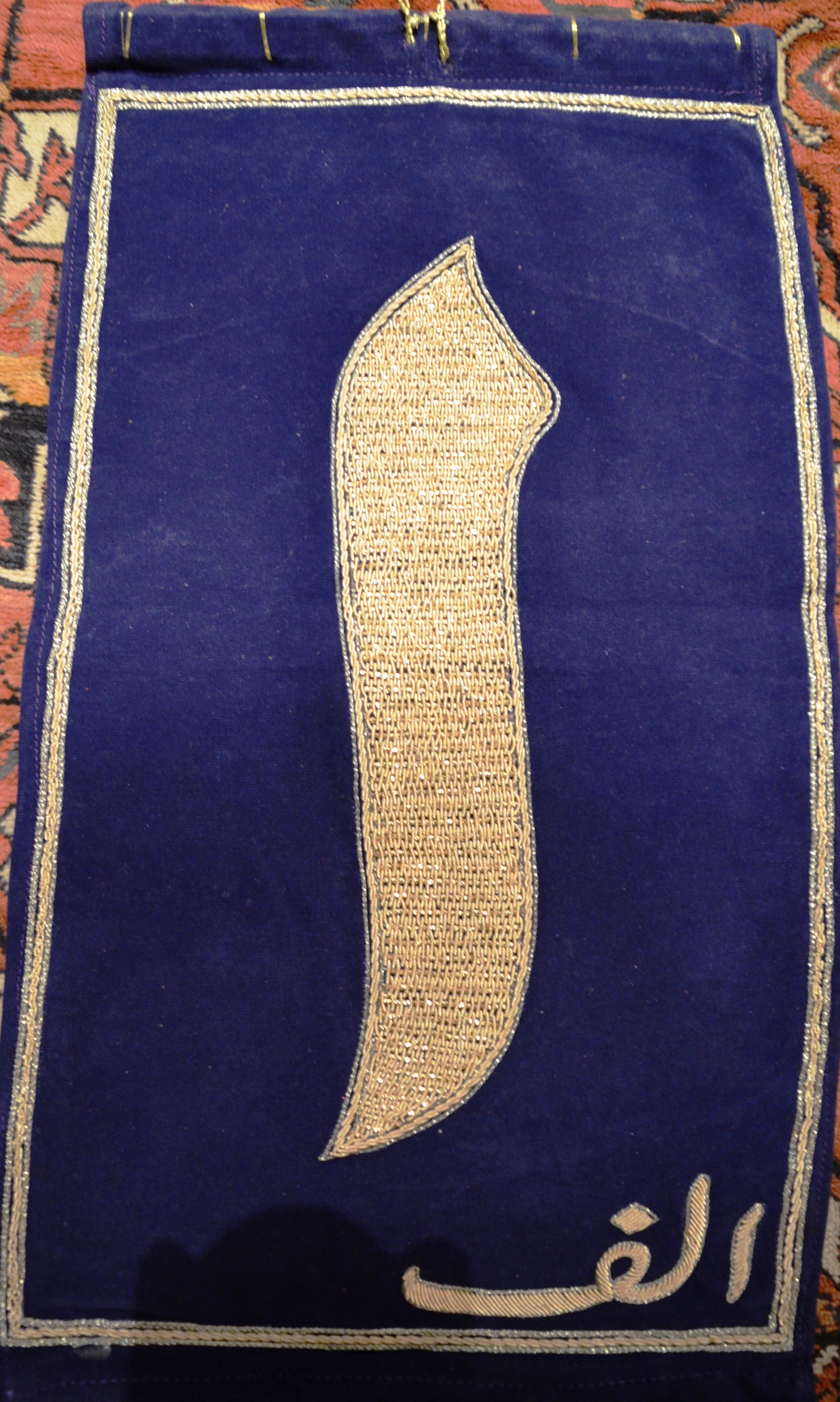
The first letter of the Arabic alphabet is represented as Al Alif and is symbolic of the unity and transcendent infinity of God. The 17th century sufi poet Bulleh Shah sang Aik Alif teray darkaar, meaning that The One which is within you is all you need to know and to know The One is to be One with God.
This wall hanging was hand made as a sacred piece by zardozi artisan Iqbal Kamalzai on velvet cloth by using gold wire pieces.
Date :2019-05-07
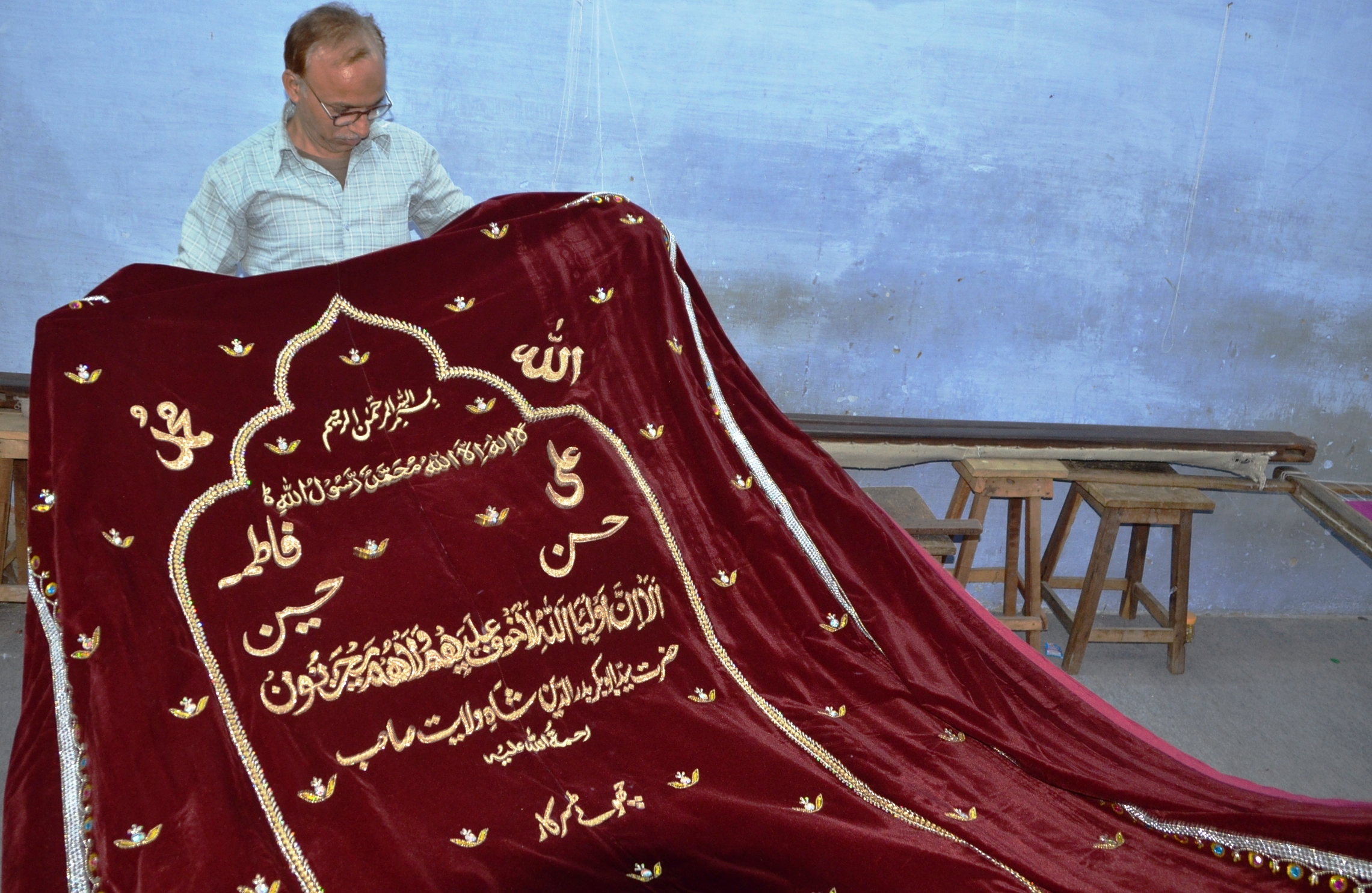
Chadars for a mazar or mausoleum are embroidered only by select zardozi artisans in the old quarter of Rampur. They contain verses from the Quran and are hand made with utmost devotion. Few friends of the Rohilla Mohalla Project requested for these Chadars to be made as an homage which they wanted to offer at the shrine of Khwaja Moinuddin Chishti at Ajmer Sharif in Rajasthan.
Date :2019-05-07
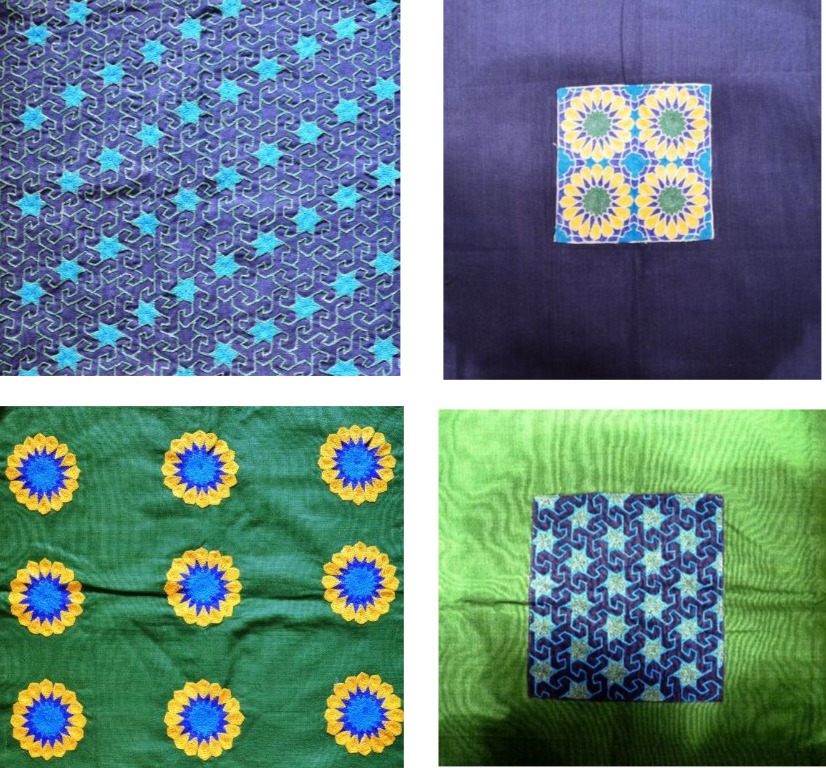
No matter how elaborate the geometric pattern in Islamic art may be, they are always based on grids constructed using only a ruler and a pair of compasses, highlighting the mathematical precision and elegance of these designs. Under the Rohilla Mohalla project, a few of the simpler geometric patterns were recreated as this set of cotton cushion covers with the traditional Ari thread embroidery. This theme helped the artisans understand the importance of measurement and symmetry in creating aesthetically appealing designs which can be used to create utility home products.